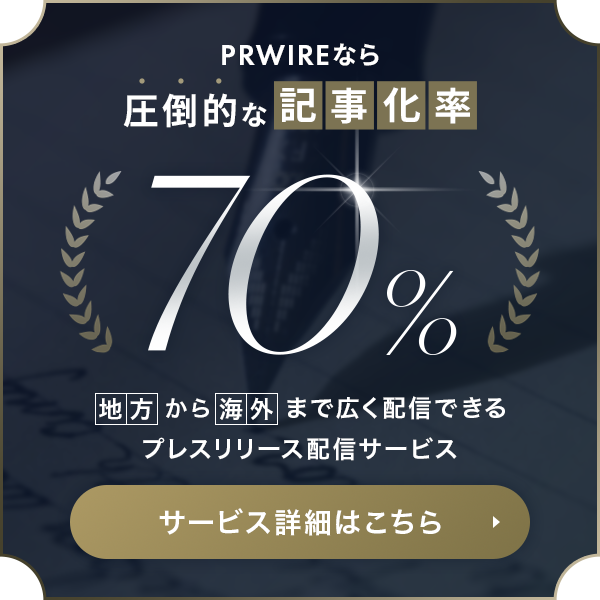Saxenda(R) Demonstrated Improvements in BMI and Body Weight in Adolescents With Obesity
PR83519
BAGSVÆRD, Denmark, April 1, 2020 /PRNewswire=KYODO JBN/ --
Novo Nordisk today announced that the New England Journal of Medicine published
results of a phase 3 trial evaluating the investigational use of Saxenda(R)
(liraglutide 3.0 mg) in adolescents (aged 12 – 18) with obesity.[1] The study
was accepted for presentation at ENDO 2020, the Endocrine Society's annual
meeting in San Francisco, US, and will be published in a supplemental issue of
the Journal of the Endocrine Society.[2] Saxenda(R) is currently indicated for
chronic weight management in adults with a BMI greater than or equal to 30
kg/m2, or greater than or equal to 27 kg/m2 with one or more weight-related
comorbidities, as an adjunct to a reduced-calorie diet and increased physical
activity.[3],[4]
The trial was designed to evaluate the efficacy and safety of Saxenda(R) in
this population and achieved its primary endpoint demonstrating that
Saxenda(R), compared with placebo, was superior in reducing Body Mass Index
(BMI) standard deviation score (SDS) at 56 weeks with a -0.22 estimated
treatment difference (ETD).[1],[2] BMI-SDS is a measure of relative weight
status adjusted for age and gender in children and adolescents.[2],[5] The
study was a post-marketing requirement of the FDA6 and the EMA in agreement
with Paediatric Investigation Plan (PIP),[7],[8] both of which aim to ensure
treatments are safe and effective for children and adolescents.
Over the last 20 years, the global prevalence of overweight and obesity in
children and adolescents has doubled from 1 in 10 to 1 in 5.9 However, current
treatment options for this population are limited, highlighting a considerable
and growing need for additional strategies.[10]
"Most adolescents with obesity are likely to have obesity as adults and are at
increased risk for developing other weight-related diseases, which is why it's
so important to address weight care and support early on," said Dr Aaron Kelly,
Professor of Pediatrics and Co-Director of the Center for Pediatric Obesity
Medicine at the University of Minnesota. "Today, treatment options beyond
behavioural counselling are limited for adolescents with obesity. Anti-obesity
medications could provide a key option as part of a personalised, complete care
plan to help them lose weight and keep it off."
In the trial, following 56 weeks of treatment, there was a difference in change
in BMI (kg/m2) with adolescents in the Saxenda(R) arm achieving a 4.29%
reduction in BMI, compared to a 0.35% increase with placebo. In addition, 43.3%
of adolescents treated with Saxenda(R) had a 5%, or more, reduction in BMI at
week 56 (compared to 18.7% on placebo) and 26.1% had a 10%, or more, reduction
(compared to 8.1% with placebo).[1],[2]
"We are encouraged by these results and the progress made to provide a
treatment option for healthcare professionals caring for adolescents living
with obesity," said Mads Krogsgaard Thomsen, executive vice president and chief
science officer of Novo Nordisk. "It's vital that families affected by obesity
have the tools and resources needed to address this health issue. These data
add to the extensive evidence for the clinical use and value of Saxenda(R) and
support Novo Nordisk's commitment to improving the lives of people with
obesity."
There were no new safety signals identified, and no severe hypoglycaemias were
reported, and adverse events were similar to those observed in adults. During
the 56-week treatment period, 64.8% of adolescents on Saxenda(R) reported
gastrointestinal adverse events, compared to 36.5% of those receiving placebo.
Three adolescents on Saxenda(R) reported serious adverse events, versus five in
the placebo group. A greater number of adolescents discontinued treatment due
to adverse events with Saxenda(R) (10.4%) compared to placebo (0%), primarily
related to gastrointestinal side effects.[1],[2]
About the phase 3 trial (NCT02918279)
The trial was a phase 3a randomised, double-blind, placebo-controlled clinical
trial investigating the effect of Saxenda(R) (liraglutide) injection 3.0 mg
compared to placebo for weight management in 251 adolescents living with
obesity as an adjunct to lifestyle therapy, defined as counselling in healthy
nutrition and physical activity for weight loss. The trial included a 12-week
run-in of lifestyle therapy, a 56-week treatment period (including dose
escalation of 4 to 8 weeks) on Saxenda(R) or placebo and a 26-week follow-up
period without Saxenda(R) or placebo. All participants received lifestyle
therapy beginning with the run-in period and during the 56-week treatment
period and 26-week follow-up period.[1],[2]
In the trial, the primary endpoint was change from baseline in BMI-SDS at week
56. BMI is a calculation of weight (kg) divided by the square of height in
metres. BMI-SDS is a measure of relative BMI status that accounts for age and
gender.[2],[5]
About Saxenda(R)
Saxenda(R) (liraglutide 3.0 mg) is a once-daily glucagon-like peptide-1 (GLP-1)
analogue with 97% similarity to naturally occurring human GLP-1,4,11 a hormone
that is released in response to food intake.[12] Like human GLP-1, Saxenda(R)
regulates appetite by increasing feelings of fullness and satiety, while
lowering feelings of hunger, thereby leading to reduced food
intake.[4],[11],[13] As with other GLP-1 analogues, Saxenda(R) stimulates
insulin secretion and lowers glucagon secretion in a glucose-dependent
manner.[4],[13] Saxenda(R) for use in adults with obesity was evaluated in the
SCALE (Satiety and Clinical Adiposity – Liraglutide Evidence) clinical trial
programme. Since launch in 2015, more than 1.5 million patients have been
treated with Saxenda(R) globally.[6]
Saxenda(R) is currently indicated for chronic weight management in adults with
a BMI greater than or equal to 30 kg/m2, or greater than or equal to 27 kg/m2
with one or more weight-related comorbidities, as an adjunct to a
reduced-calorie diet and increased physical activity.[3],[4]
About adolescent obesity
Obesity is a chronic disease that is influenced by multiple aspects, including
physiological, psychological, genetic, environmental and socioeconomic
factors.[14] 80% of adolescents who live with obesity are likely to have
obesity as an adult.[15] Adolescents with obesity are also more likely to
develop weight-related diseases, like diabetes and cardiovascular diseases, at
a younger age.[16] Just like other chronic diseases, obesity requires long-term
management.[17-20] The global increase in the prevalence of obesity is a public
health issue that has severe cost implications to healthcare systems.[21],[22]
Globally over 100 million children and adolescents have obesity.[23]
About Novo Nordisk
Novo Nordisk is a leading global healthcare company, founded in 1923 and
headquartered in Denmark. Our purpose is to drive change to defeat diabetes and
other serious chronic diseases such as obesity and rare blood and endocrine
disorders. We do so by pioneering scientific breakthroughs, expanding access to
our medicines and working to prevent and ultimately cure disease. Novo Nordisk
employs about 42,700 people in 80 countries and markets its products in around
170 countries. For more information, visit novonordisk.com, Facebook
[http://www.facebook.com/novonordisk], Twitter
[http://www.twitter.com/novonordisk],
LinkedIn[http://www.linkedin.com/company/novo-nordisk],
YouTube[http://www.youtube.com/novonordisk].
References
1. Kelly A, Auerbach P, Barrientos-Perez M, et al. A randomized, controlled
trial of liraglutide for adolescents with obesity. New England Journal of
Medicine. 2020.
2. Kelly A, Auerbach P, Barrientos-Perez M. Liraglutide for weight management
in pubertal adolescents with obesity: a randomized controlled trial. Journal of
the Endocrine Society. Volume 4, Issue supplement 1. April–May 2020.
3. FDA. Saxenda(R) (liraglutide 3 mg) US Prescribing Information. Available at:
http://www.novo-pi.com/saxenda.pdf. Last accessed: March 2020.
4. EMA. Saxenda(R) (liraglutide 3 mg) summary of product characteristics.
Available at:
https://www.ema.europa.eu/en/documents/product-information/saxenda-epar-product-information_en.pdf
Last accessed: March 2020.
5. US Preventive Task Force, Grossman D, Bibbins-Domingo K, et al. Screening
for Obesity in Children and Adolescent: US Preventive Services Task Force
Recommendation Statement. JAMA. 2017; 317:2417–2426.
6. Novo Nordisk. Data on file.
7. EMA. Paediatric investigation plans. Available at:
Last accessed: March 2020.
8. EMA. On the acceptance of a modification of an agreed paediatric
investigation plan for liraglutide (Saxenda). Available at:
Last accessed: March 2020.
9. UNICEF. The state of the world's children 2019. Available at:
https://www.unicef.org/media/60806/file/SOWC-2019.pdf. Last accessed: March
2020.
10. Cardel M, Jastreboff A and Kelly A. Treatment of Adolescent Obesity in
2020. Journal of the American Medical Association. 2019; 322:1707–1708.
11. Novo Nordisk Canada. Saxenda(R) (liraglutide 3 mg) Canada Product
Monograph. 12 July 2017. Available at:
Last accessed: March 2020.
12. Orskov C, Wettergren A and Holst JJ. Secretion of the incretin hormones
glucagon-like peptide-1 and gastric inhibitory polypeptide correlates with
insulin secretion in normal man throughout the day. Scandinavian Journal of
Gastroenterology. 1996; 31:665–670.
13. van Can J, Sloth B, Jensen CB, et al. Effects of the once-daily GLP-1
analog liraglutide on gastric emptying, glycemic parameters, appetite and
energy metabolism in obese, non-diabetic adults. International journal of
Obesity. 2014; 38:784–793.
14. National Institutes of Health. Clinical Guidelines On The Identification,
Evaluation, And Treatment Of Overweight And Obesity In Adults. Available at:
http://www.nhlbi.nih.gov/guidelines/obesity/ob_gdlns.pdf. Last accessed: March
2020.
15. Lifshitz F. Obesity in Children. J Clin Res Pediatr Endocrinol. 2008;
1:53–60.
16. WHO. Childhood overweight and obesity. Available at:
https://www.who.int/dietphysicalactivity/childhood/en/. Last accessed: March
2020.
17. EASO. 2015. 2015 Milan Declaration: A Call to Action on Obesity. Available
at: https://easo.org/2015-milan-declaration-a-call-to-action-on-obesity/. Last
accessed: March 2020.
18. American Medical Association. A.M.A Adopts New Policies on Second Day of
Voting at Annual Meeting. Obesity as a Disease. Available at:
Last accessed: March 2020.
19. Bray GA, Kim KK, Wilding JPH, et al. Obesity: a chronic relapsing
progressive disease process. A position statement of the World Obesity
Federation. Obes Rev. 2017; 18:715–723.
20. The Obesity Society. The Obesity Society Updates Position on Obesity. New
Statement Focuses on Obesity as a Chronic Disease. Available at:
Last accessed: March 2020.
21. World Health Organization. Obesity and Overweight Factsheet no. 311.
Available at: http://www.who.int/mediacentre/factsheets/fs311/en/. Last
accessed: March 2020.
22. Cawley J, Meyerhoefer C, Biener A, et al. Savings in Medical Expenditures
Associated with Reductions in Body Mass Index Among US Adults with Obesity, by
Diabetes Status. Pharmacoeconomics. 2015; 33:707–722.
23. The GBD 2015 Obesity Collaborators. Health Effects of Overweight and
Obesity in 195 Countries over 25 Years. New England Journal of Medicine. 2017;
377:13–27.
Source: Novo Nordisk
本プレスリリースは発表元が入力した原稿をそのまま掲載しております。また、プレスリリースへのお問い合わせは発表元に直接お願いいたします。
このプレスリリースには、報道機関向けの情報があります。
プレス会員登録を行うと、広報担当者の連絡先や、イベント・記者会見の情報など、報道機関だけに公開する情報が閲覧できるようになります。










